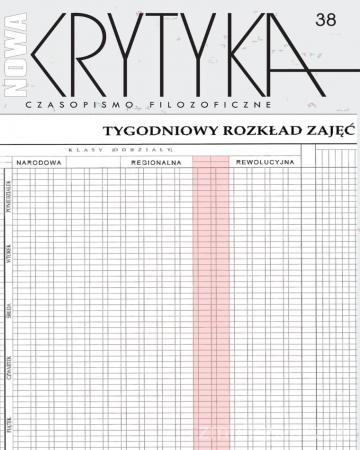




| Authors: |
Jacek
Tittenbrun
Uniwersytet im. Adama Mickiewicza w Poznaniu |
| Keywords: | Labour power ownership Marx pattern variables cooperation |
| Data publikacji całości: | 2018 |
| Page range: | 22 (39-60) |
| 1. | Beck, U. (1992). Risk Society: Towards a New Modernity. London: Sage. |
| 2. | Beck, U. (1998). Democracy Without Enemies. Cambridge: Polity Press. |
| 3. | DiNardo, John, Nicole M. Fortin, Thomas Lemieux. (1996). Labor Market Institutions |
| 4. | and the Distribution of Wages, 1973–1992: A Semiparametric Approach. Econometrica |
| 5. | 64(5), 1001–1044. DOI: 10.2307/2171954. |
| 6. | Corneo, G., Lucifora, C., (1997). Wage formation under union threat effects: Theory and |
| 7. | empirical evidence. Labour Economics 4, 265–292. |
| 8. | Doogan, K. (2001). Insecurity and Long-term Employment. Work, Employment and Society, |
| 9. | 15(3), 419-441. DOI: 10.1017/S0950017001000290. |
| 10. | Durkheim, E. (1933). The Division of Labor in Society, New York: Free Press. |
| 11. | Gilbert, D. (2011). The American Class Structure: In An Age of Growing Inequality. Belmont, |
| 12. | CA: Wadsworth Value Walk. |
| 13. | Hasse, R., Lieulsfrud, H. (2002). From Disorganized Capitalism to Transnational Fine |
| 14. | Tuning? Recent Trends in Wage Development, Industrial Relations, and ‘Work’ |
| 15. | as a Sociological Category. The British Journal of Sociology 53 (1), 107–126. |
| 16. | 10.1080/00071310120109357. |
| 17. | Kerr, C. (1983). The Future of Industrial Societies. Cambridge, Mass.: Harvard. |
| 18. | Levine, D. (ed.) (1971). Georg Simmel On Individuality and Social Forms. Selected Writings. |
| 19. | Chicago: University of Chicago Press. |
| 20. | Lewis, H.G. (1986). Union relative wage effects: A survey. University of Chicago Press. |
| 21. | Marx, K. (1976). Capital: A Critique of Political Economy. London: Penguin Books |
| 22. | Limited. |
| 23. | Marx, K. (1939). Grundrisse der Kritik der Politischen Ökonomie [Outlines of the Critique |
| 24. | of Political Economy]. In: Economic Works of Karl Marx 1857–61. Moscow: |
| 25. | Foreign Language Publishers. |
| 26. | Milkman, R. (1987). American women and industrial unionism during World War II. |
| 27. | W: M.R. Higonnet, J. Jenson, S. Michel, M.C Weitz (red.), Behind the lines: Gender |
| 28. | and the Two World Wars (168–181). New Haven: Yale University Press. |
| 29. | Mythen, G. (2004). Ulrich Beck: A Critical Introduction to the Risk Society. London: |
| 30. | Pluto Press. |
| 31. | Parsons, T., Bales, R.F. (1956). Family, Socialization and Interaction Process. London: |
| 32. | Routledge & Paul. |
| 33. | Platt, J. (2013). Cyberslacking boosts workplace productivity. Pobrane z: https://www. |
| 34. | mnn.com/green-tech/computers/stories/cyberslacking-actually-boosts-workplaceproductivity |
| 35. | (12.01.2018). |